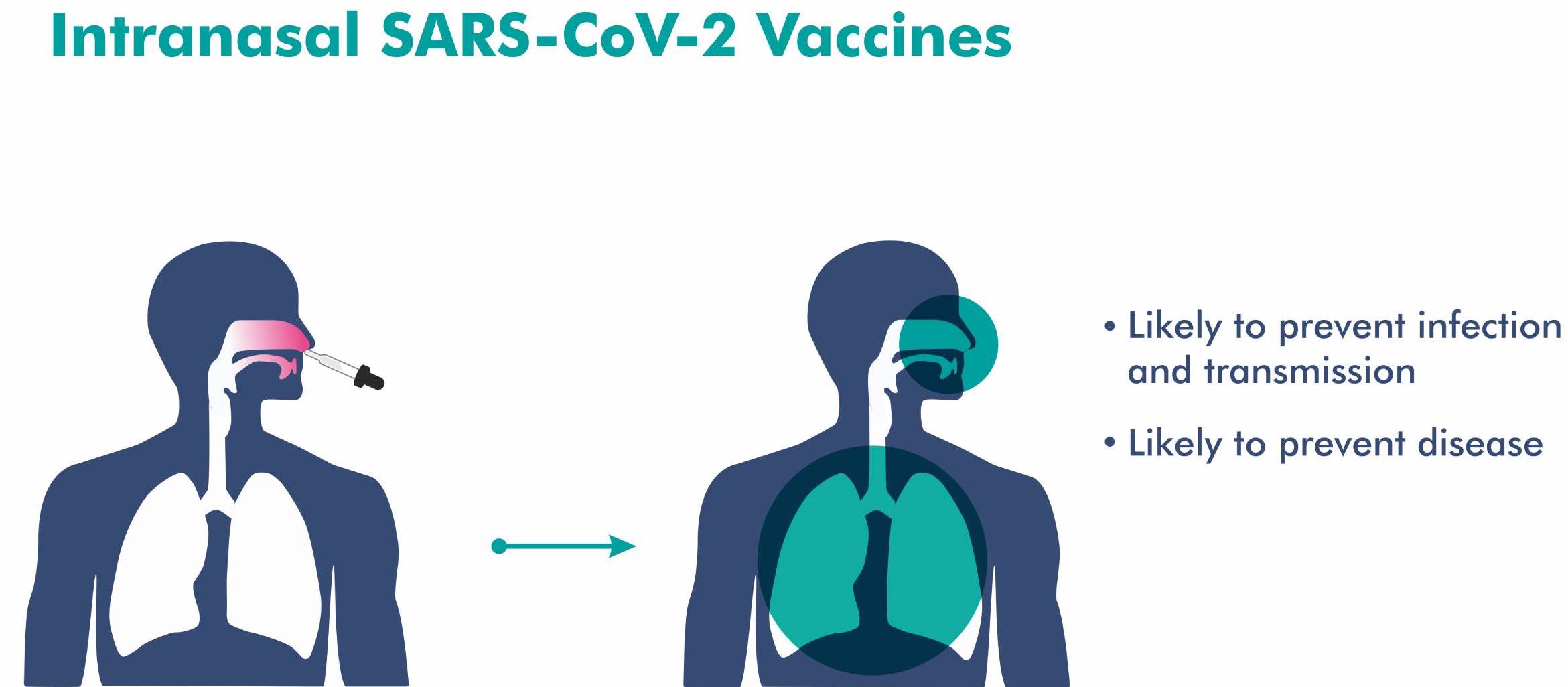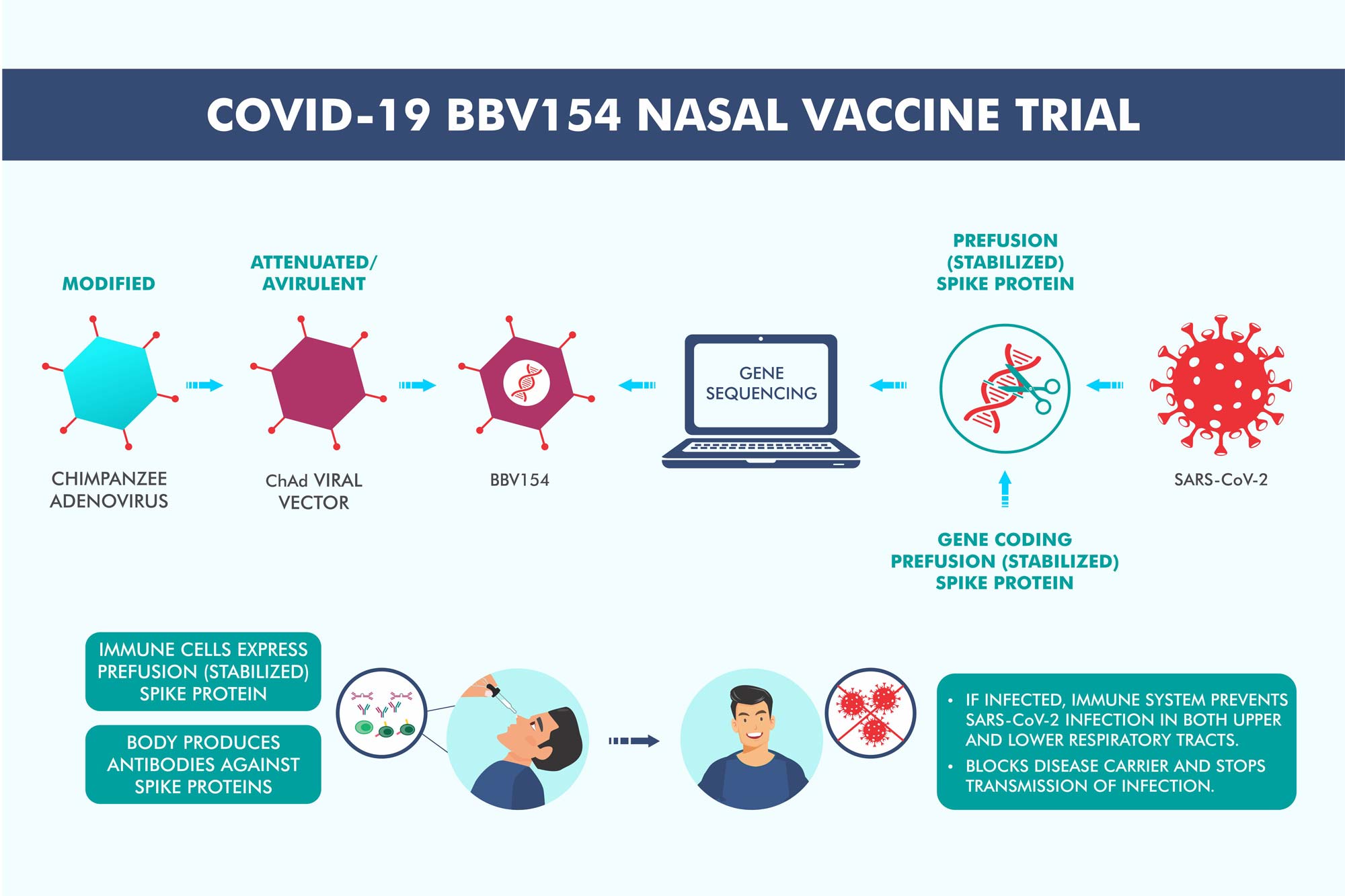ForumIAS announcing GS Foundation Program for UPSC CSE 2025-26 from 19 April. Click Here for more information.
Contents
| For 7PM Editorial Archives click HERE → |
Introduction
India’s first nasal vaccine for COVID-19, iNCOVACC, will be available as a booster dose for persons above 18 years of age. The nasal vaccine will be delivered through the nose. Those individuals who have already received a heterologous booster dose of either Covishield or Covaxin can now receive the nasal vaccine. The vaccine has been developed by the Bharat Biotech, the makers of Covaxin, in collaboration with Washington University at St Louis, US. The nasal vaccine is a recombinant replication-deficient adenovirus vectored vaccine with a pre-fusion stabilized spike protein. The vaccine has been approved by the Central Drugs Standard Control Organisation. The nasal vaccine for COVID-19 will further strengthen the level of preparations to fight the possible rise in infections in India, given the surge in COVID-19 cases in China.
How does the immune system fight pathogens?
The immune system has two distinct components: Mucosal and Circulatory.
The Mucosal Immune System provides protection at the mucosal surfaces of the body. These include the mouth, eyes, middle ear, the mammary and other glands, and the gastrointestinal, respiratory and urogenital tracts.
Sticky secretions cover these mucosal surfaces. Various Antibodies and anti-microbial proteins are present in these secretions. Immune Cells are also located in the lining of these surfaces. Together they attack the invading pathogens.
The Circulatory Immune System generates antibodies and immune cells that are delivered through the bloodstream to the internal tissues and organs. These circulating antibodies do not usually reach the mucosal surfaces in large enough amounts to be effective.
The Mucosal and Circulatory compartments of the immune system are largely separate and independent.
What are the key players in Mucosal Immunity?
Proteins known as Antibodies or Immunoglobulins are the most well-known immune components. Antibodies are produced by the immune system in response to invading agents that the body recognises as ‘non-self’ (or foreign) such as viruses and bacteria.
Antibodies bind to specific antigens. Antigen is a substance that enters the body and starts a process that can cause disease. The presence of antigens in the body generally triggers an immune response. Antibodies that bind to antigens can either inactivate them, as they do with toxins and viruses, or kill bacteria with the help of other immune proteins or cells.
The Mucosal Immune System generates a specialized form of antibody called Secretory IgA, or SIgA. SIgA is located in mucosal secretions, such as saliva, tears, nasal and intestinal secretions, and breast milk. It is resistant to digestive enzymes that readily destroy other forms of antibodies. It is also superior to most other immunoglobulins at neutralizing viruses and toxins, and at preventing bacteria from attaching to and invading the cells lining the surfaces of organs.
There are also many other key players in the mucosal immune system, including different types of anti-microbial proteins that kill pathogens, as well as immune cells that generate antibody responses.
How does the COVID-19 virus enter the body?
The vast majority of infectious diseases that affect humans are contracted through the mucosal surfaces of the body, such as through the act of breathing, eating, or sexual contact. Important exceptions include infections that originate from wounds as well as pathogens transmitted by bites from insects or ticks.
The virus, that causes COVID-19 (SARS-CoV-2), can enter the body through the nose, mouth, or eyes if droplets or aerosols come into contact with these areas. If the virus travels deep into the lungs and triggers an overactive and inflammatory immune response, it has the potential to cause severe disease.
Evidence indicates that the COVID-19 virus most likely makes its initial contact with the immune system through the mucous membranes that line the surfaces of the mouth, nose, and throat. This is supported by the presence of SIgA antibodies (against the SARS-CoV-2) in the secretions of infected people, including their saliva, nasal fluid and tears. These locations, especially the tonsils, have specialized areas that specifically trigger mucosal immune responses.
Research suggests that if these SIgA antibody responses form as a result of vaccination or prior infection, or occur quickly enough in response to a new infection, they could prevent serious disease by confining the virus to the upper respiratory tract until it is eliminated.
Source: Bharat Biotech
How do Nasal Vaccines for COVID-19 work?
Nasal Vaccines can be administered via mucosal routes such as the mouth or nose. This induces an immune response by stimulating the mucosal immune system, causing mucosal secretions to produce SIgA antibodies. Antibody Immunoglobulin A (Ig A, SIgA in its secretory form) plays an important role in the immune function of mucous membranes. The amount of IgA produced in association with mucosal membranes is greater than all other types of antibody combined.
In nasal vaccines, the viral antigens intended to stimulate the immune system would be taken up by immune cells within the lining of the nose or tonsils. Researchers believe nasal vaccines work analogously to oral mucosal vaccines. Antigens in the vaccine induce B cells in mucosal sites to mature into plasma cells that secrete a form of IgA. The IgA is then transported into mucosal secretions throughout the body, where it becomes SIgA.
If the SIgA antibodies in the nose, mouth or throat target SARS-CoV-2, they could neutralize the virus before it can drop down into the lungs and establish an infection.
Source: Bharat Biotech
What advantage do Nasal Vaccines have against COVID-19?
First, it provides local immunity (nose, where the virus first enters) and is expected to be more effective than other vaccines. This is because these Nasal vaccine will help block the virus at its point of entry, or at least to confine it to the upper respiratory tract, where it might inflict relatively little damage.
Second, Nasal vaccines are also expected to limit the transmissibility of the COVID-19 virus. Research has shown that COVID-19 spreads during normal breathing and speech, and is exacerbated by sneezing, coughing, shouting, singing and other forms of exertion. Presence of SIgA antibodies (due to vaccine) in nasal secretions will limit the transmission through above mechanisms. (Existing vaccines do not induce SIgA antibody responses. Injected vaccines primarily induce circulating IgG antibodies, which are effective in preventing serious disease in the lungs).
Third, It is easy to administer with no need for syringes and trained manpower.
Fourth, it will be practical and affordable. Nasal vaccines are expected to have lower costs, easy distribution, etc. Nasal vaccines for COVID-19 will not require cold chain infrastructure with very low temperature.
Fifth, iNCOVACC could be developed as a multivalent so as to cover a wider spectrum of the Sars-CoV-2 virus.
Sixth, Nasal vaccines may be a useful supplement to injected vaccines in hot spots of infection.
Conclusion
Nasal Vaccine for COVID-19 can prove to be very effective in dealing with the pandemic. They are easy to transport and administer. Simple administering procedure may also help in overcoming vaccine hesitancy. The uptake of booster dose has been very low, the introduction of Nasal vaccine may address the gap. It will help boost the immunity of the population and reduce the severity of any possible future spike in infections.
Syllabus: GS III, Science and Technology: Developments and their applications and effects in everyday life; Awareness in the fields of Bio-technology.
Source: Down to Earth, Indian Express, Bharat Biotech






